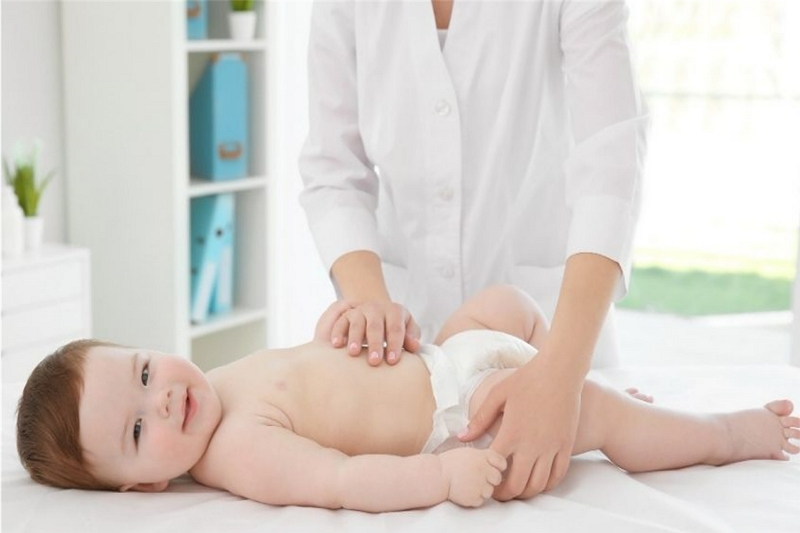How many size 0 diapers do I need? This question is a little more difficult to answer than you might think. The amount of diapers you need depends on how often your baby poops and pees.
On average, a newborn will go through six to eight diapers per day, while an infant may need up to ten. If your baby is formula-fed, they will likely have more bowel movements than breastfed babies.

So if you’re not sure how many size 0 diapers to buy, it’s always better to have too many rather than not enough! You can always save the extras for later on down the road.
Some other things that will affect how many diapers you’ll need include: whether or not your child sleeps through the night, what type of climate you live in, and if you use cloth or disposable diapers. If you’re using disposable diapers, it’s also a good idea to keep some extras on hand just in case you run out while out and about.
At the end of the day, it’s always better to be safe than sorry when it comes to diaper supplies! So go ahead and pick up an extra pack (or two) of size 0 diapers before your little one arrives. You’ll be glad you did.
How tight should a cloth diaper be?
It’s a question that often comes up among cloth diapering parents: how tight should the diaper be? The answer, of course, depends on your baby and the particular diaper you’re using.
But as a general rule, you want to make sure the diaper is snug enough so that it doesn’t leak but not so tight that it’s uncomfortable for your child.
The best way to determine whether or not a diaper is fitting properly is to check for leaks. If the diaper is leaking, then it’s too loose; if it’s uncomfortable for your baby, then it might be too tight. You can also try putting your hand inside the waistband of the diaper to see if you can easily move it up and down.
Why is my baby peeing out the side of his diaper?
One possible explanation for this is that your baby’s diaper is too tight. If the elastic around the waist and legs of the diaper are constricting your baby’s movement, it can cause him to pee out the side. Try loosening the diaper a bit to see if that solves the problem.
Alternatively, your baby may simply need more frequent diaper changes, especially if he is drinking lots of fluids. Make sure you are changing his diaper often enough so that it doesn’t get wetter on one side than the other.
Finally, make sure that you are using a quality brand of diapers – some generics don’t have as good absorbency as name brands do.
If none of these solutions seems to be working, then it’s possible that your baby has a urinary tract infection and needs to see a doctor. Contact your paediatrician if you have any concerns.
How do you know if the diaper is too small?
There are a few ways to tell if your baby’s diaper is too small. One way is if the diaper feels tight or uncomfortable around your baby’s waist and legs. Another sign that the diaper might be too small is if it doesn’t seem to be absorbing any wetness, even after you’ve changed it several times.
If you’re concerned that your baby’s diaper might be too small, consult with your paediatrician. They can help you determine whether or not a different size diaper is needed and provide other helpful tips for keeping your little one dry and comfortable.
It’s also important to keep in mind that each baby grows at their own pace, so what may have been the right size for your child last month may not be the right size this month. Be sure to check the diaper size chart often and make changes as needed.
What should the caregiver do after changing the baby’s diaper?
After changing the baby’s diaper, it is important to clean up any mess that was made. This can be done by using a wipe or cloth to clean the area and then throwing away the dirty material. It is also important to make sure that the baby is completely dry before putting on a new diaper and clothes.
If there are any rashes or irritations present, it is necessary to consult with a doctor. Finally, it is vital to store all dirty diapers in a covered container until they can be disposed of properly.
It is also important for caregivers to keep an eye out for any signs of infection after changing a baby’s diaper. These may include redness, swelling, warmth, pus drainage, or fever. If any of these symptoms are present, it is necessary to seek medical attention right away.
Caregivers should also be aware of the danger of choking posed by disposable diapers. Babies have been known to choke on the tabs that hold the diaper together. For this reason, caregivers should cut off any excess tabs before putting a diaper on a baby.
Additionally, caregivers should never leave a baby unattended while he or she is wearing a diaper, even if it is empty. This will help to prevent accidents from happening.
Finally, caregivers need to make sure that they are changing the baby’s diaper often enough. A good rule of thumb is to change the diaper every two hours, or as soon as it becomes wet or soiled. This will help to keep the baby clean and healthy, and will also avoid any unpleasant smells.
